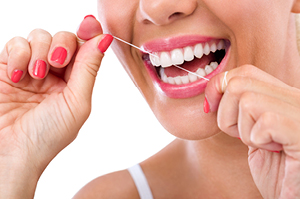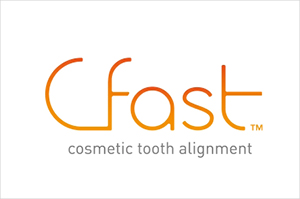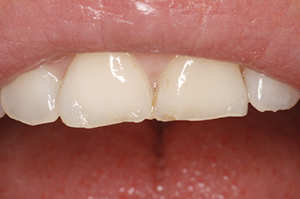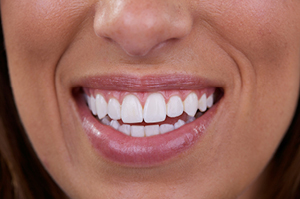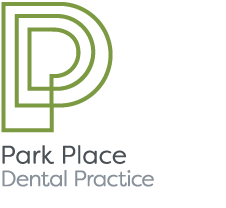Park Place Cosmetic Dentists, Cardiff
At Park Place Dental Practice, nestled in the heart of Cardiff, we pride ourselves on our commitment to excellence in cosmetic dentistry. Our dedicated team of cosmetic dentists combines expertise with a passion for creating beautiful smiles, tailored to each patient’s unique needs. With a focus on comfort, care, and communication, we ensure a welcoming and professional experience for everyone.
Conveniently located for easy access, our practice offers a wide range of cosmetic dentistry services designed to enhance your smile. From initial consultation to final results, we’re with you at every step, ensuring your journey towards a perfect smile is smooth and informed.
Our Commitment to Your Care
Understanding the importance of trust and confidence in dental care, we place a strong emphasis on patient-centric services. Our practice is equipped with the latest in dental technology, ensuring that every treatment is not just effective but also comfortable. Whether you’re seeking a subtle enhancement or a complete smile makeover, our team is here to guide you through the process, with your well-being as our top priority.
Oral Health Assessments
Understanding the foundation of a healthy smile begins with comprehensive oral health assessments. Our approach ensures a thorough examination, identifying any underlying issues and discussing your cosmetic goals. This initial step is crucial for crafting a personalized treatment plan that addresses both your oral health needs and aesthetic desires.
Cosmetic Treatments
Our range of cosmetic treatments includes tooth whitening, veneers, orthodontics, and more, designed to enhance your smile’s appearance. Each service is tailored to meet your specific needs, focusing on achieving natural-looking results that boost your confidence. From correcting misalignments with orthodontics to brightening your smile with tooth whitening, we’re dedicated to providing transformative outcomes.
Restorative and Surgical Options
For those requiring more comprehensive interventions, our practice offers advanced restorative and surgical options. These treatments aim to not only improve the aesthetic of your smile but also restore functionality. Whether it’s through dental implants, crowns, or bespoke smile makeovers, we employ the latest techniques and materials to ensure the highest quality of care.
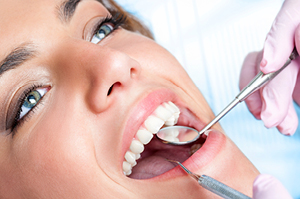
Oral Health Assessment
Oral health assessments are offered to all patients at Park Place. Learn more

Bonded White Fillings
The latest cosmetic white fillings can replace unsightly old fillings. Learn more

Crowns
Crowns are an ideal way to strengthen weakened teeth and restore the original beauty of a tooth. Learn more

Partial/Full Dentures
Replace missing teeth enabling you to eat and smile with confidence. Learn more
The Cosmetic Dental Process
Embarking on your journey towards a perfect smile begins with a detailed consultation. Our experts conduct an in-depth smile assessment to understand your aspirations and evaluate your oral health. This initial step is pivotal in developing a customised treatment plan, designed exclusively for you.
Following the consultation, we outline the steps of your proposed treatments, ensuring you are fully informed and comfortable with the process ahead. Each phase of your treatment is executed with precision and care, leading to the final reveal of your transformed smile. Post-treatment, we provide comprehensive aftercare advice to maintain the longevity and health of your smile.
Our commitment to excellence ensures a seamless experience from start to finish, with personalised attention every step of the way.
Cosmetic Dental Technology
At our practice, we leverage cutting-edge technology to enhance treatment outcomes and ensure patient comfort. From advanced imaging techniques that offer precise diagnostics to the latest in dental equipment for efficient treatments, our commitment to incorporating modern technology is evident in every aspect of our care.
Our investment in state-of-the-art tools allows us to provide minimally invasive procedures, faster recovery times, and more predictable results. This technological edge supports our mission to deliver superior cosmetic dentistry services tailored to each patient’s unique needs.
Maintenance Tips After Cosmetic Dentistry
Maintaining the results of your cosmetic dental treatments and ensuring ongoing oral health requires a combination of professional care and personal diligence. We recommend regular dental check-ups to monitor your oral health and the condition of your treatments. At home, a consistent oral hygiene routine, including thorough brushing, flossing, and the use of mouthwash, is essential. Additionally, avoiding foods and drinks that can stain or damage your teeth will help preserve the beauty of your smile.
For specific advice tailored to your treatments and oral health status, our team is always here to provide guidance and support.
Book Your Consultation Today!
Ready to embark on the journey to your dream smile? Contact us at Park Place Dental to schedule your personalised consultation. Our friendly team is here to guide you through every step of the process, ensuring your experience is seamless and your results are outstanding.
Call us at 029 2037 3831, email us at reception@parkplacedental.co.uk, or send a message via WhatsApp to 07592 597521 to secure your appointment. Alternatively, you can use our convenient online booking system to find a time that suits you. Let us help you achieve the smile you’ve always wanted.
Cosmetic Dentist Cardiff – Frequently Asked Questions
What does a cosmetic dentist do?
A cosmetic dentist focuses on improving the appearance of a person’s teeth, gums, and overall smile. Their work encompasses a wide array of procedures designed to enhance dental aesthetics, such as colour, position, shape, size, alignment, and overall smile appearance. These treatments are not just about looks; they also contribute to the functionality and health of your mouth, ensuring that improvements are both beautiful and beneficial for oral health.
Services Offered by a Cosmetic Dentist
From subtle changes to major repairs, a cosmetic dentist offers a variety of treatments to improve your smile. These include teeth whitening, veneers, bonding, crowns, enamel shaping, and orthodontics, among others. Each of these treatments can address specific concerns, from discolouration to misalignment, to give you a more confident and radiant smile.
Teeth Whitening
This popular procedure can significantly brighten teeth that have been stained or discoloured by food, drink, or smoking, restoring them to a natural, whiter appearance.
Dental Veneers
Veneers are thin, custom-made shells crafted of tooth-coloured materials designed to cover the front side of teeth, ideal for correcting imperfections like chips, cracks, or gaps.
Composite Bonding
A process where a tooth-coloured resin material is applied and hardened with a special light, bonding the material to the tooth to improve your smile.
Dental Crowns
Crowns, also known as caps, cover a damaged tooth to restore its shape, size, strength, and appearance.
Orthodontics
Not just for children, orthodontic treatments can benefit any age group, aligning teeth and correcting bites to improve oral health and cosmetic appearance.
Choosing a Cosmetic Dentist
When considering cosmetic dental treatments, it’s important to choose a dentist with a proven track record of success in cosmetic procedures. Look for someone who is willing to discuss your aesthetic goals and can show you examples of previous work that aligns with your expectations.
Dental aesthetics can significantly impact your confidence and quality of life. A cosmetic dentist works closely with patients to create customised treatment plans that not only improve the visual aspects of their smiles but also enhance their overall dental health and functionality. By combining artistry with advanced dental techniques, they provide solutions tailored to each patient’s unique needs and desires.
What's the difference between cosmetic and general dentistry?
The primary difference between cosmetic and general dentistry lies in their focus and objectives. While general dentistry is concerned with the maintenance of oral health, addressing dental issues such as cavities, gum diseases, and overall oral hygiene, cosmetic dentistry focuses on enhancing the appearance of a person’s teeth, mouth, and smile. General dentistry provides the necessary treatments for optimal dental health, whereas cosmetic dentistry offers elective – or desired – procedures or services.
General Dentistry Explained
General dentistry is dedicated to preventing, diagnosing, and treating oral health issues. This includes routine dental cleanings, fillings, root canals, extractions, and the management of gum diseases. The aim is to keep your teeth and gums healthy and to prevent future dental problems.
Routine Dental Cleanings
Routine cleanings are a cornerstone of dental care, helping to prevent tooth decay and gum disease by removing plaque and tartar buildup.
Fillings
Fillings repair minor tooth fractures, decay, or damages, using materials like composite resins or amalgam to restore tooth integrity and function.
Root Canals
This treatment is necessary when the tooth’s pulp becomes infected or damaged, with the procedure involving the removal of the pulp, cleaning, and sealing the tooth.
Cosmetic Dentistry Explained
Cosmetic dentistry, on the other hand, focuses on improving the appearance of a person’s teeth and smile. It includes procedures like teeth whitening, veneers, and dental implants, all aimed at enhancing aesthetic appeal.
Teeth Whitening
As one of the simplest ways to improve your smile, teeth whitening can dramatically lighten the natural colour of your teeth without removing any of the tooth surfaces.
Dental Veneers
Veneers provide a high-quality solution for teeth that are discoloured, chipped, or misshapen, offering a durable and aesthetically pleasing result.
Dental Implants
Used to replace missing teeth, implants provide a long-term solution that can significantly improve the appearance of one’s smile and overall facial structure.
In summary, while both fields of dentistry aim to improve oral health, the main distinction lies in their specific focus areas: general dentistry on health and function, and cosmetic dentistry on aesthetic appeal. A comprehensive dental care plan can often involve both aspects to ensure not only the health but also the visual appeal of your smile.
Who is an ideal patient for cosmetic dental treatment?
An ideal patient for cosmetic dental treatment is someone looking to improve the appearance of their smile. This encompasses individuals with teeth that are discoloured, worn, chipped, misaligned, uneven, irregularly shaped, or even those with gaps between them. However, beyond aesthetic concerns, the ideal candidate should have good overall oral health, including healthy gums and teeth, to ensure the best outcomes from cosmetic procedures.
Criteria for Cosmetic Dental Treatment
Understanding who is best suited for cosmetic dental treatments involves evaluating several key criteria, which ensure not only the effectiveness of the procedure but also the health and satisfaction of the patient.
Dental Health
Before undergoing any cosmetic procedure, it’s essential that a patient’s oral health is in good condition. Issues such as gum disease, tooth decay, or a need for significant restorative work should be addressed prior to cosmetic enhancements.
Aesthetic Goals
Patients with clear aesthetic goals and realistic expectations about the outcomes of their treatment are ideal candidates. A thorough consultation with a cosmetic dentist can help clarify what is achievable, ensuring alignment between patient expectations and possible results.
Commitment to Oral Hygiene
Maintaining the results of cosmetic dental treatments requires a commitment to good oral hygiene practices. Ideal patients are those who are willing to follow their dentist’s recommendations for care, including regular brushing, flossing, and dental check-ups.
Non-Smokers
Smoking can have a detrimental effect on oral health and the longevity of cosmetic dental treatments. Non-smokers, or those willing to quit, often experience better outcomes and longer-lasting results.
Ultimately, the ideal patient for cosmetic dental treatment is one who values their dental health and is looking for improvements in the appearance of their smile that align with their overall health and lifestyle. With advancements in dental technology and techniques, cosmetic dentistry offers a range of options to help patients achieve a brighter, more appealing smile while maintaining the health and function of their teeth.
What are popular cosmetic dental treatments?
Popular cosmetic dental treatments encompass a variety of procedures designed to enhance the appearance of a patient’s smile. These treatments can address a wide range of concerns, from discolouration and alignment to the shape and size of teeth. The most sought-after cosmetic dental treatments aim to improve both the aesthetics and functionality of the teeth, contributing to a patient’s overall oral health and confidence.
Top Cosmetic Dental Procedures
The following are among the most popular cosmetic dental treatments available, each tailored to meet specific aesthetic goals:
Teeth Whitening
One of the simplest and most cost-effective ways to enhance your smile, teeth whitening procedures can dramatically lighten teeth that have been stained or discoloured by food, drink, smoking, or medication.
Dental Veneers
Made from porcelain or composite resin, veneers are thin, custom-made shells designed to cover the front surface of teeth, instantly transforming the appearance of your smile. They are ideal for hiding imperfections such as chips, cracks, or severe discolouration.
Dental Bonding
In this procedure, a tooth-coloured resin material is applied to the tooth and hardened with ultraviolet light, bonding the material to the tooth. Dental bonding can repair chips, cracks, and gaps, as well as improve the shape of a tooth.
Dental Crowns
Crowns, or caps, are used to cover and restore the shape, size, strength, and appearance of a damaged tooth. They can also be used to protect a weak tooth from breaking or to cover a dental implant.
Invisalign and Orthodontics
Clear aligners like Invisalign offer a modern, nearly invisible method to correct misaligned teeth without the need for traditional metal braces. Orthodontic treatments are not only aesthetically pleasing but also improve oral health by aligning the teeth properly.
Choosing the Right Treatment
Deciding on the best cosmetic dental treatment depends on several factors, including the patient’s aesthetic goals, oral health status, and budget. A consultation with a cosmetic dentist is essential to discuss options and tailor a treatment plan that meets the individual’s needs and desires. With the right approach, cosmetic dental treatments can significantly enhance the beauty of your smile and boost your self-confidence.
How can cosmetic dentistry straighten teeth?
Cosmetic dentistry offers several options for straightening teeth, enhancing not only the aesthetics of a smile but also contributing to better oral health. Straight teeth are easier to clean, reducing the risk of cavities and gum disease. The methods used in cosmetic dentistry to straighten teeth focus on comfort, appearance, and effectiveness, providing patients with multiple options to achieve their desired outcomes.
Methods to Straighten Teeth in Cosmetic Dentistry
There are various treatments within cosmetic dentistry aimed at straightening teeth, each suited to different needs and preferences:
Clear Aligners
Clear aligners, such as Invisalign, are a popular choice for adults and teens seeking a less noticeable method to straighten their teeth. These custom-made, transparent plastic aligners are virtually invisible, allowing patients to correct misalignments without the aesthetic impact of traditional braces.
Dental Veneers
For minor misalignments and gaps, dental veneers offer a quicker solution. By attaching thin porcelain or composite shells to the front of the teeth, veneers can create the appearance of a straighter smile without the need for orthodontic appliances.
Orthodontics
Traditional braces, made from metal or ceramic, remain an effective method for correcting more significant alignment issues. Modern advancements have made braces less obtrusive and more comfortable, appealing to patients of all ages.
Choosing the Right Option
The best method for straightening teeth through cosmetic dentistry depends on several factors, including the extent of misalignment, the patient’s lifestyle, and their aesthetic preferences. A comprehensive evaluation by a cosmetic dentist is crucial to determine the most suitable option. They will consider the patient’s oral health, the alignment issues present, and the desired outcome to recommend the most effective treatment plan.
Straightening teeth not only improves the appearance of a smile but also enhances oral health by making teeth easier to clean and reducing the risk of future dental issues. With today’s cosmetic dentistry options, patients have access to treatments that align their teeth effectively, comfortably, and discreetly.
How are tooth gaps treated in cosmetic dentistry?
In cosmetic dentistry, treating tooth gaps (diastemas) involves several effective methods aimed at creating a more uniform and aesthetically pleasing smile. Tooth gaps can vary in size and can be a source of self-consciousness for many individuals. Fortunately, cosmetic dentistry offers solutions that not only address the aesthetic concerns but also enhance the overall functionality and health of the mouth.
Treatments for Tooth Gaps
There are multiple approaches to treating tooth gaps, each tailored to the specific needs and goals of the patient:
Dental Bonding
Dental bonding is a quick and cost-effective method for closing small to moderate gaps. A tooth-coloured resin is applied to the sides of the teeth adjacent to the gap, then shaped and hardened with a special light. This effectively reduces the space between teeth, offering a natural-looking improvement.
Veneers
Veneers are thin, custom-made shells of porcelain or composite material that are bonded to the front of the teeth. They can be used to cover gaps as well as improve the colour, shape, and overall appearance of teeth. Veneers are a popular choice for their durability and the dramatic transformation they can achieve.
Orthodontics
For larger gaps or when there are additional alignment issues, orthodontic treatments such as braces or clear aligners can be employed to move teeth into the desired position, closing the gaps. This method not only improves the appearance of the smile but also the bite and overall dental health.
Choosing the Best Treatment Option
The appropriate treatment for tooth gaps depends on several factors, including the size of the gap, the condition of the surrounding teeth, and the patient’s overall dental health and cosmetic goals. A consultation with a cosmetic dentist is essential to assess the situation and determine the most effective treatment plan. This personalized approach ensures that patients receive the best possible outcome, enhancing both the beauty of their smile and their oral health.
With the advancements in cosmetic dentistry, patients have access to a range of treatments to address tooth gaps, allowing for a tailored approach that meets their individual needs and preferences. Whether through bonding, veneers, or orthodontics, cosmetic dentistry provides effective solutions for creating more cohesive and aesthetically pleasing smiles.
How should I prepare for cosmetic dental treatment?
Preparing for cosmetic dental treatment involves several important steps to ensure you achieve the best possible outcomes. It’s essential to have a clear understanding of your aesthetic goals, as well as to take practical steps to ensure your oral health is in optimal condition prior to beginning treatment. Proper preparation can help to streamline the process, making your cosmetic dental journey as smooth and effective as possible.
Steps to Prepare for Cosmetic Dental Treatment
Here are key steps to consider when preparing for your cosmetic dental procedure:
Research and Set Goals
Begin by researching the different types of cosmetic dental treatments available and consider what changes you would like to see in your smile. Identifying specific goals can help you communicate more effectively with your dentist during the consultation.
Schedule a Consultation
Booking a consultation with a cosmetic dentist is crucial. This appointment allows you to discuss your aesthetic goals, ask questions, and learn about the options suitable for your situation. Your dentist will also assess your oral health to determine if any preliminary work is needed before starting cosmetic treatment.
Maintain Good Oral Hygiene
Ensuring your teeth and gums are healthy is vital before undergoing cosmetic dental work. Continue to brush twice a day, floss daily, and use mouthwash to keep your mouth in the best possible condition.
Consider Your Budget and Financing Options
Cosmetic dentistry can be an investment in your smile and self-confidence. Review your budget and discuss financing options or payment plans with your dentist to make your treatment as affordable as possible.
Prepare for Recovery
While many cosmetic dental treatments have minimal recovery time, it’s still important to prepare for any necessary aftercare. Ask your dentist about what to expect post-treatment and how to care for your teeth to ensure the best results.
By taking these steps to prepare for cosmetic dental treatment, you can help ensure that you are well-informed and ready for the process. Effective preparation, combined with choosing an experienced cosmetic dentist, can lead to transformative results that enhance not only your smile but also your overall confidence and quality of life.
What is digital smile design and its benefits?
Digital Smile Design (DSD) is a contemporary dental treatment planning tool that uses cutting-edge technology to plan and execute cosmetic and restorative dental treatments. It involves the use of digital photography, video, and imaging software to analyze a patient’s facial and dental structures, allowing dentists to design a custom smile that harmonizes with the patient’s overall facial aesthetics. DSD enables both the dentist and patient to visualise the end result of the treatment before it begins, ensuring that patient expectations are aligned with the potential outcomes.
Key Benefits of Digital Smile Design
Digital Smile Design offers several significant benefits, making it a popular choice for both dentists and patients looking to enhance their smiles:
Customisation
DSD allows for highly personalised smile designs that take into account the patient’s unique facial features and aesthetic desires, leading to results that are both beautiful and natural-looking.
Visualisation
Patients can see a preview of their new smile before any treatment begins, providing an opportunity to make adjustments and ensure their expectations are fully met.
Improved Communication
The visual and interactive nature of DSD improves communication between the dentist and the patient, facilitating a better understanding of the treatment plan and expected outcomes.
Efficiency and Accuracy
Using digital tools increases the efficiency and accuracy of cosmetic dental treatments, from planning through to execution, resulting in improved patient satisfaction.
Interdisciplinary Approach
DSD facilitates collaboration among dental professionals, such as orthodontists, periodontists, and oral surgeons, ensuring a comprehensive approach to achieving the desired aesthetic outcome.
Digital Smile Design represents a paradigm shift in cosmetic dentistry, offering a patient-centric approach that enhances the planning and delivery of dental care. Its ability to create a visual representation of the end result, combined with its precision and customisation, makes DSD a valuable tool for anyone looking to improve their smile. With DSD, patients are more engaged in their treatment process, leading to outcomes that exceed expectations and transform smiles.
What's the recovery period for most cosmetic dental procedures?
The recovery period for cosmetic dental procedures varies significantly depending on the type of treatment performed. Most cosmetic dental treatments are designed to be minimally invasive, offering quick recovery times and allowing patients to resume their daily activities shortly after. However, the specific timeframe for recovery and any necessary aftercare will depend on the complexity of the procedure and the individual patient’s response to treatment.
Recovery Times for Common Cosmetic Dental Procedures
Below is an overview of typical recovery periods for some of the most popular cosmetic dental treatments:
Teeth Whitening
Teeth whitening procedures are among the simplest cosmetic dental treatments, often requiring no significant recovery time. Patients may experience tooth sensitivity for a few hours to a couple of days post-treatment, but this typically subsides quickly.
Dental Veneers
The process of getting dental veneers usually involves two visits to the dentist. After the veneers are placed, there might be some initial sensitivity or discomfort, but this generally fades within a few days. Most patients can resume normal activities immediately after each appointment.
Dental Bonding
Recovery from dental bonding is immediate, with no downtime required. Patients might experience some sensitivity to hot and cold temperatures for a short period following the procedure, but this usually diminishes quickly.
Dental Crowns
After receiving a dental crown, some patients may feel mild discomfort or sensitivity, particularly to temperature changes, for a few days. Most patients are able to return to their regular routines the same day or the day after the procedure.
Invisalign and Orthodontics
For treatments like Invisalign, there is no recovery period in the traditional sense, but patients may experience mild discomfort each time a new aligner is fitted. This discomfort usually eases within a few days as the teeth adjust to the aligner.
Ensuring a Smooth Recovery
To ensure a smooth recovery, it’s important to follow your dentist’s aftercare instructions carefully. This may include dietary recommendations, oral hygiene practices, and, in some cases, taking over-the-counter pain relief if necessary. Keeping follow-up appointments allows your dentist to monitor your recovery and ensure the best results from your cosmetic dental treatment.
While recovery times are generally short for most cosmetic dental procedures, the exact period can vary. Patients should discuss their specific treatment plan and any recovery expectations with their dentist to ensure they are fully prepared for the process.
How is tooth discoloration treated in cosmetic dentistry?
Tooth discoloration is a common concern addressed by cosmetic dentistry, with treatments designed to restore the natural whiteness of teeth or improve their color. Discoloration can be caused by a variety of factors, including diet, aging, smoking, and certain medications. Cosmetic dentistry offers several effective solutions for treating tooth discoloration, ensuring patients can achieve a brighter, more confident smile.
Treatments for Tooth Discoloration
Several cosmetic dental treatments are available to treat tooth discoloration, depending on its cause and severity:
Teeth Whitening
Professional teeth whitening is one of the most popular and effective treatments for removing surface stains and restoring teeth to their natural color. This procedure can be performed in a dental office or at home with custom-made trays provided by a dentist, offering significant whitening results in a short period.
Dental Veneers
For more severe discoloration or when whitening treatments are not effective, dental veneers can provide an alternative solution. Veneers are thin, custom-made shells of porcelain or composite material that are bonded to the front of teeth, covering stains and discoloration completely.
Dental Bonding
Dental bonding can also be used to improve the appearance of discolored teeth. A tooth-colored resin material is applied to the tooth and hardened with a special light, which can be tinted to match the desired color, effectively masking discoloration.
Crowns
For teeth that are severely discolored and cannot be treated with other methods, dental crowns may be recommended. Crowns cover the entire tooth, providing a new surface that is matched to the natural color of the patient’s teeth.
Choosing the Right Treatment
The appropriate treatment for tooth discoloration depends on the cause of the stains, the degree of discoloration, and the patient’s overall dental health and cosmetic goals. A consultation with a cosmetic dentist is essential for determining the most effective treatment plan. By assessing the specific type and severity of discoloration, a dentist can recommend the best approach to achieve a whiter, brighter smile.
With advances in cosmetic dentistry, patients have access to a range of treatments to address tooth discoloration. From professional teeth whitening to veneers and crowns, these options offer effective solutions for enhancing the aesthetics of a smile, ensuring patients can enjoy the confidence that comes with brighter, healthier-looking teeth.

